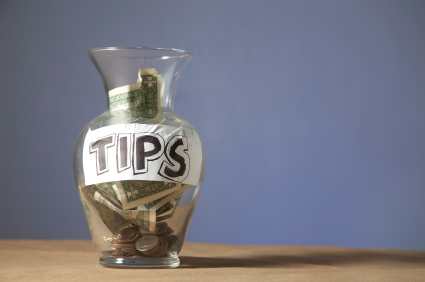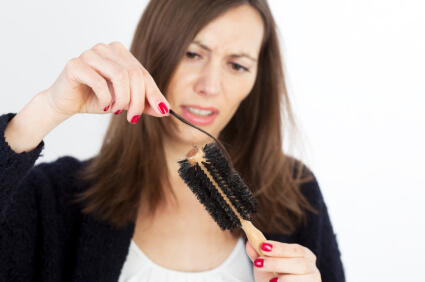 This? This post right here? Will be one of the most important pieces I ever publish on this site.
This? This post right here? Will be one of the most important pieces I ever publish on this site.
This post might even save your life.
No hyperbole there, Dolls. Martine Ehrenclou has that much to teach us about taking charge of our own medical care. And for us chronically pained peeps, being a Take-Charge Patient is not optional. It’s mandatory.
Full Disclosure: Martine’s one of my clients at Stage Presence Marketing. One of the things I’m helping her with is the blog tour for the launch of her new book, The Take-Charge Patient . But even if she wasn’t a client, I’d still hop over barrels to get her on this blog, because her message is that important for the readers of this site.
Today is the day Martine’s newest book, The Take-Charge Patient, is released. I’m thrilled that she agreed to an email interview with Euston Arch as one of the first stops on her blog tour. You can find out more about Martine here, and more about the book on the book’s site here. Be sure to head over to the Facebook page for The Take-Charge Patient, and also follow Martine on Twitter, ’cause she regularly shares helpful links and news on issues related to patient care and advocacy.
Also, on Friday, May 18th, I’ll be posting the Euston Arch’ review of The Take-Charge Patient, so be sure to come back then! Grab your own copy here at Amazon. (Not an affiliate link.)
Here we go!
 The Martine Ehrenclou/Take-Charge Patient Interview
The Martine Ehrenclou/Take-Charge Patient Interview
What’s the main message of The Take-Charge Patient, and why is it so crucial that we hear it these days?
The main message of The Take-Charge Patient is that as patients we must advocate for ourselves.
We can’t change our health care system, but we can change how we approach it. If we approach our physicians and other medical professionals as if we are approaching a business meeting, we come prepared to medical appointments. We enter the office empowered and more confident.
If you bring your car to the mechanic, you are equipped with information on what is wrong with your car, right? Approach meetings with physicians in the same way. Know something about your symptoms, about your medical condition, gather copies of your medical records (always keep a copy of them for yourself) and prepare for a meeting with your doctor. You make the most of the interaction that way, and you present yourself as a credible patient.
Doctors no longer have the time to spend with patients that they would like to. If they take health insurance, we get about 7-15 minutes with them. Doctors aren’t going to change. We do. Because we need to make the most of our medical care and take some responsibility for ourselves as patients. Passivity just doesn’t work anymore. Traditional patients enter into relationships with medical professionals expecting them to handle everything, to know everything, to keep track of everything and prevent every kind of medical error. That may have worked many years ago, but not anymore.
Take-charge patients take charge of what they can. We are empowered, knowledgeable, organized and we ask questions when we don’t understand something (even if it’s scary).
1.5 million people are harmed by medication errors each year. Every medical professional involved in the process from prescription to fulfillment of the medicine, is multi-tasking, taking care of too many patients and has too little time and can easily make mistakes.
Unless we are our own advocates, we will be victim to a system that at times can seem determined to beat us.
What prompted you to write this book?
I wrote The Take Charge Patient because after writing my last book, Critical Conditions, which is about how to be an effective advocate for a hospitalized loved one, I knew I had to write a book about how to advocate for oneself to get the best medical care.
Six months into my interviews of over 200 physicians, nurses, pharmacists, health psychologists, other medical processionals and patients, I developed severe pelvic pain that last 16 months. I saw 11 physicians of differing specialties, and 3 alternative medical professionals in effort to find an accurate diagnosis and cure for my pain.
10 misdiagnoses later, plus 11 tests and procedures, 22 medications, I still had no accurate diagnosis and no cure for the pain.
Ironically a few months into my chronic pain condition, I realized I was living each chapter of my new book, using so many of the strategies that I had learned from the interviews and from hundreds of hours of research. I went from advocate for others to advocate for myself. This was a brutal journey but one that put my own strategies to the test. It is one thing to write a book from research and it is another to live it.
My extensive research led me to a New York Times article on hernias in women. As I read that article, my heart sped up and I knew in my gut that I had the same diagnosis as the woman described in the article. Call it a strong gut feeling or simply that the woman’s symptom profile was exactly like mine. Luckily, the surgeon mentioned in the article who cured the woman was at a teaching hospital in Los Angeles. I was on the phone within two minutes making an appointment.
Dr. Shirin Towfigh did tests and a thorough exam. She was so lovely and treated me so respectfully. She heard my story, listened carefully. She ran tests. She then did surgery and cured me. She found an inguinal hernia with a nerve passing through the hole, a muscle tear at my C-section site. I have been pain free since August of 2011. I am so grateful to Dr. Towfigh. I’m also grateful that I didn’t give up and that I was persistent as my own medical detective.
One of the main problems those of us in the chronic pain community are facing these days is the fear of being labeled as “drug-seeking.” That fear can keep us from speaking up to doctors when we really need to. What are some of your best tips for CP patients to deal with that fear and learn how to speak up and advocate for ourselves with our medical providers?
I understand the fear of being labeled “drug seeking.” I also completely understand being afraid to speak up to doctors. We are raised to view them as gods, to not interfere, to be submissive and compliant.
Chronic pain patients can too easily be labeled as “drug seekers” or “difficult patients.” The latter, I believe, is because doctors get frustrated and lose self confidence when they cannot “cure” the patient so some blame the patient instead.
Here are a few tips:
If you organize and educate yourself as a patient this serves two purposes:
- You empower yourself and increase your self-confidence.
- You increase your credibility as a patient and many doctors will take you more seriously.
So what does organizing and educating yourself mean?
It means being prepared for a meeting with a doctor. Preparation involves the following:
- Create a health file complete with copies of your pertinent medical records so you can go to any medical professional without having to rely on any doctor or pharmacy to provide anything. You have your complete medical history in a packet so a doctor or other medical professional can view it all in one sitting.
- Create a chronology of events starting with the first time you experienced symptoms or pain. Describe when it first came on, what makes it worse or better, when it occurs most often (such as late afternoon or evening) and list what you have tried that either helps the pain or has no effect.
- List the physicians you have seen, their contact information and on what dates.
- List the tests and their results.
- Get copies of all tests, procedures and surgeries and their results. Include them in your health file. Keep a copy for yourself.
- Create a list of your current medications and their dosages, over-the counter medications, herbs and supplements.
- If you have a diagnosis, list it and which doctor gave it to you and on what date. Research that diagnosis only on credible websites and from credible resources. Nothing discredits a patient more than bringing in information from a fringe website and a doctor has to spend valuable time discrediting the information you’ve found. Credible websites are academic, government and professional medical society/academy organizations. They end in .gov, .org and .edu.
- When you take charge of your medical information, become knowledgeable about your condition and what you’ve been through, you not only present yourself as a credible patient but you increase your self confidence.
- Come prepared for an office visit with a list of questions, and top three medical issues you want to discuss with your doctor. Write it down ahead of time or keep this information in your smart phone or on another kind of electronic device.
There were times during my chronic pain condition when I was intimidated by doctors. I tried to counteract that with preparing ahead of time for the appointment and I dressed professionally as if I was about to enter a business meeting. As a chronic pain patient, I wanted the physician to take me seriously. I wanted his/her respect. I wanted to be seen as a credible reporter on my body and I wanted to be viewed as a patient who was invested in my health care—someone who took charge of what I could.
Preparation is key to patient confidence. It makes it easier to ask questions.
Don’t let the doctor’s lack of time scare you off. This is your time, you are paying for it (health insurance or not) and you deserve to be treated respectfully and have your questions answered.
Many physicians I interviewed said that it is important for patients to stay on track. Try not to bring into the conversation what your sister told you to do or what your friend’s doctor did for her.
This is about increasing your credibility as a patient.
Try to talk in a cognitive manner (less emotional) and you’ll find that doctors might respond and listen more carefully. Doctors are cognitive thinkers. This isn’t to say you can’t cry, act frustrated, depressed or whatever it is you are feeling—it just means you try to think about using strategies that help you get the most out of your office visit.
Do you think the failure to advocate for ourselves as patients is quite literally killing us? In what ways?
Failure to advocate. Passive patients receive less than optimum care. If you do not interact with your medical provider, ask questions, works as a team player, educate yourself about your medical condition and your medications, you risk leaving a doctor’s office or hospital not knowing exactly what your diagnosis and treatment plan are. You put yourself at risk for being treated incorrectly, subjected to medical errors, poor communication and substandard care.
Advocating for yourself takes guts. I won’t kid you. It’s not always easy. Enlist the support of a loved one to go with you to a medical appointment. Gather whatever it is you need to oversee and monitor your own care. This is your life we are talking about. 100,000 people die every year because of medical errors.
1.5 million people are harmed by medication errors every year. This is the easiest medical error to prevent. Participating in your medical care is simply essential now.
Sometimes it feels like dealing with chronic conditions is a full-time job. What are some ways we can manage our own care without going nuts in the process?
I really understand how dealing with chronic conditions can feel like a full time job. At times, when I had my chronic pain condition, it felt like that to me.
Do what you can to take charge of what you can for yourself as a patient. This reduces a sense of overwhelm and helplessness. It allows you to put the whole process aside at times, which is essential for not going nuts.
Once you’ve done that, try to divert your attention elsewhere. That’s not easy to do, I know. But what helped me during my 16 months of chronic pain was to do my best to focus on my work, my husband and children. I watched movies. I tried to change my focus from my medical condition to something else that was positive.
It didn’t always work and there were many times when I simply fell back with frustration, anger and fear. I spent a lot of time crying to my husband. It was not easy. But I believe what kept me from losing my mind was my refusal to give in completely to my medical condition. I stopped talking about it to most people. When people asked, “You still have the pelvic pain? Why haven’t you found an answer?” it made me feel worse and more afraid that I would never find the answer or be out of pain. So I stopped interacting with those people about my medical condition.
I chose who I interacted with very carefully. I paid attention to how I felt with certain people. There’s nothing worse than well-meaning loved ones pummeling you with questions about your medical condition because they are anxious about it.
Get an advocate. Find a loved one who is medically savvy and ask her/him to partner with you in your journey. Can she/he go with your to a couple of medical appointments? This takes some of the burden off of you and it helps to converse with someone after a medical appointment. I enlisted a good friend who was very medically savvy as my advocate.
Find others who deal have your medical condition but look for people who are successfully dealing with it. It doesn’t mean you have to find someone who no longer has your condition, but it’s important to find people who are still managing their lives and living with the condition. This is about helping yourself. I found other pelvic pain patients who I could talk to but I was careful about interacting with people who were completely consumed with their medical condition at all times.
What’s the biggest misconception about patient advocacy, in your view?
The biggest misconception about patient advocacy, in my opinion, is that patients or medical professionals view it as usurping the job of the medical professional. Not so. They are the experts, not us.
Patient advocacy is about implementing strategies I’ve suggested in my books to support your doctors’ efforts not to replace them. But it’s also about educating yourself so you can decide for yourself if a treatment plan is right for you or if a diagnosis sounds right according to your research or second opinions with other physicains.
Patient advocacy is about advocating for the patient but it’s also about being savvy with medical professionals and developing good communication skills so you can interact with them without stepping on their toes. You want collaboration and the way to get that is to diplomatically partner with your doctor. Many doctors are very open to this now because in the end an educated, empowered patient helps them too. But some still are not. If not, walk away. I met with two doctors who were not interested in a collaborative relationship with me as a patient. I walked away.




